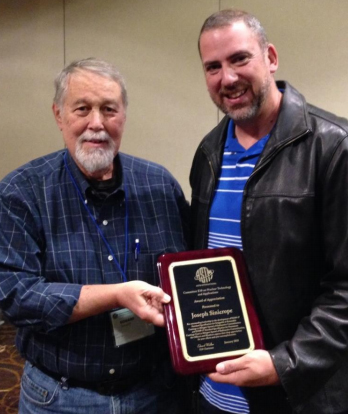Building on the initial success from the recent publication of two new international standard specifications for fixatives in July 2017, DOE EM and ASTM International’s E10.03 Subcommittee have embarked on an aggressive strategy to address shortfalls in uniform testing protocols specifically designed to provide a set of accepted tools to evaluate and compare the operational performance of fixative technologies under a variety of safety basis scenarios. As highlighted by Mr. Andrew Szilagyi, Director for DOE EM’s Office of Infrastructure and D&D, “There is general acceptance by the community on the utility of fixatives to immobilize residual contamination and mitigate risk during D&D activities, but a more formal process needs to be available for site personnel and regulators to confirm their capabilities. Uniform standards can play a significant role in this effort.” Researchers from SRNL and Florida International University’s Applied Research Center (FIU ARC) are also exploring avenues to better leverage and more fully integrate the standards development process, and have suggested this initiative could also serve as the basis for updating the DOE handbook titled, Airborne Release Fractions/Rates and Respirable Fractions for Nonreactor Nuclear Facilities (DOE-HDBK3010-94, December 1994), a guiding document in how fixative technologies are credited towards the source term formula. The source term formula is used to determine quantities of radioactive material that could potentially be driven airborne for the purpose of estimating the scope of a potential release from a given facility or activity. The FIU research efforts are being conducted as part of a Cooperative Agreement (CA) between the DOE EM and FIU ARC.
The vision of the E10.03 Subcommittee is to promulgate operationally relevant, uniform testing protocols that can be leveraged by the various technology innovation and development programs across the nuclear environmental management community, and support decision makers and end users with common references in the selection and employment of those standards and associated technologies. The Subcommittee is initiating the development of standardized testing protocols for: 1) Determining a fixative’s ability to immobilize radioactive contamination and measuring its impacts on airborne release fractions (ARF) and respirable fractions (RF) in the source term formula when exposed to thermal and seismic stressors, and; 2) Determining the decontamination factor (DF) of strippable coatings on various substrates. Both of these objectives are directly aligned with and support DOE EM’s incombustible fixatives research need, and based on significant feedback received from the sites and national labs, have been integral in facilitating the introduction of a designated intumescent coating technology into a contaminated environment.
The ASTM International E10.03 Subcommittee will continue pursuing further testing protocol and standards development for fixatives and other technology categories associated with D&D, creating consensus based standards for D&D technologies that are not only aligned with technical specifications, but also account for the safety, regulatory, and operational requirements encountered during D&D activities. Addressing existing shortfalls through standards will provide credibility, yield a significant return on investment and allow all types of D&D technologies (robotics, fixatives, characterization, decontamination, demolition, etc.) to be developed, tested, evaluated and compared to a set of uniformly accepted metrics.

Edward Walker (ASTM E10 Chairman, Nuclear Technology and Applications) presenting an award of recognition to Joseph Sinicrope (FIU Applied Research Center), January 2018.
For additional information, contact Mr. Joseph Sinicrope (Research Scientist, FIU ARC) at (305) 348-0084 or jsinicro@fiu.edu; Dr. Leonel Lagos (Principal Investigator, FIU ARC) at (305) 348-1810 or lagosl@fiu.edu.
Download article: DOE EM and ASTM Build on Successful Initiative – Final